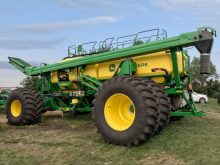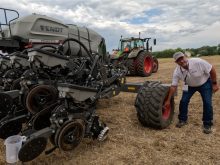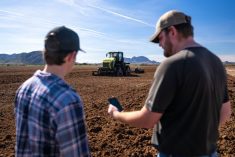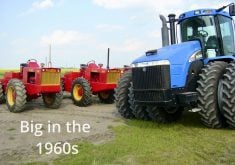A row planter specialist in southern Manitoba says this is the time of year farmers should be readying their seeding equipment for the 2022 seeding season.
Andrew Kippen, manager of North Valley Precision Planting at Homewood in south-central Manitoba east of Carman, has been busy these days testing planter metering systems for accuracy.
“You can only put the seed in the ground once, so let’s do it right and give that seed the best possible chance to grow,” says Kippen. “Mistakes can happen all year but let’s not start with putting the seeds in the ground wrong.”
Read Also
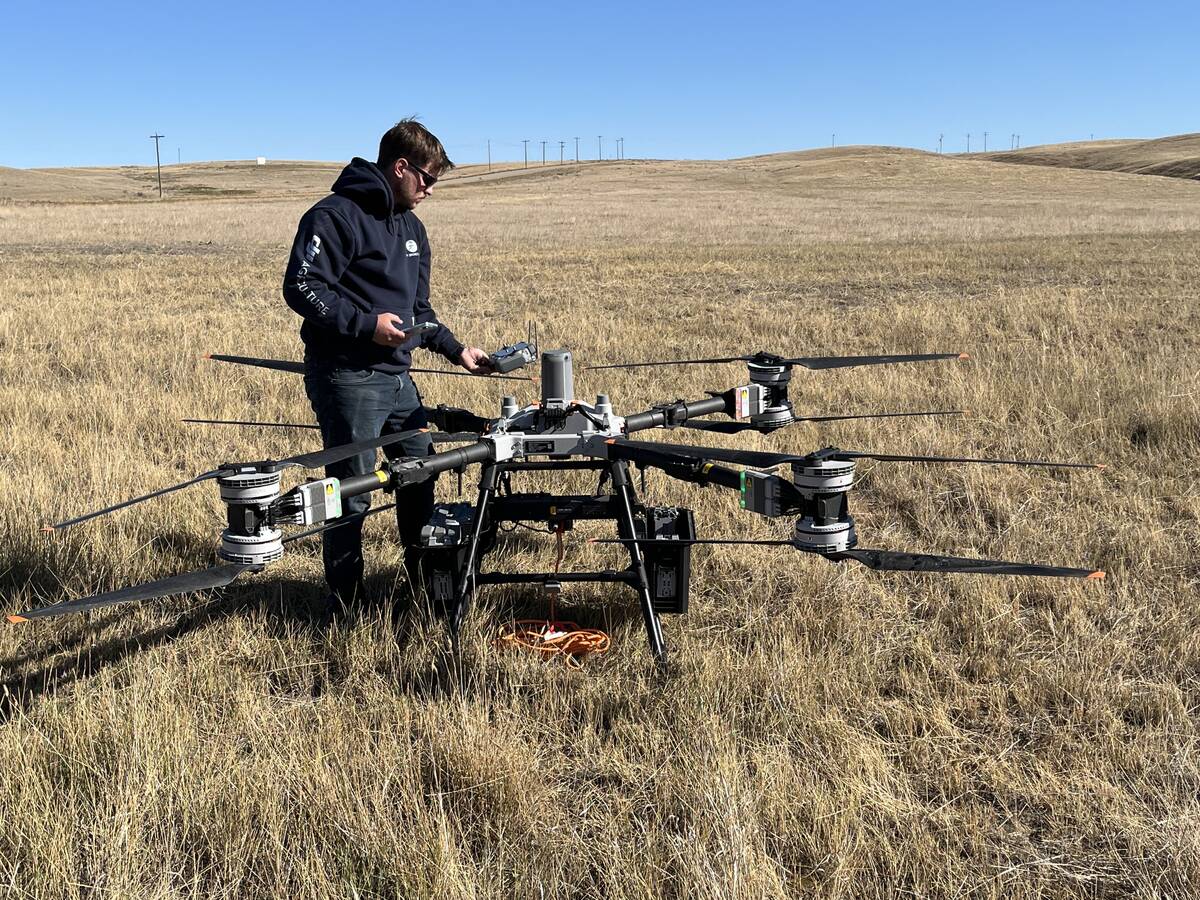
Farm-facing drone does the heavy lifting
Canadian distributor DJI Agriculture unveils its AGRAS T100 drone to western Canada’s producers for greater efficiencies in spraying and granular spreading in fields.
Kippen also encourages producers if they are not using seed firmers to consider having them installed on their planters, and if the firmers are in use then check them for wear and tear.
Kippen, who has worked as a Red Seal agricultural equipment technician for Manitoba dealers for the past 18 years including eight and a half years as a service manager, joined North Valley last fall. “It was an opportunity just to focus on precision planters,” says Kippen, who lives in Elm Creek, just west of Winnipeg. He was born and raised on a family farm, later attending Assiniboine Community College in Brandon to become an ag technician.
While farmers are familiar with the importance of having seed metering systems tested for accuracy, Kippen ramped things up by introducing a mobile meter testing service to farmers across Manitoba and into Saskatchewan.
With a meter testing stand and all necessary tools contained in a trailer, he can bring the testing and inspection services to your farm.
“I bring the meter test stand to the farm shop,” he says. “We run the meters and watch for singulation percentages. It may be 98 per cent or higher, or lower. For example, we can go through the meter, try to fine-tune why it is lower than it is supposed to be and try to increase percentages.”
Kippen can test and calibrate all types of seed metering systems whether it be OEM factory installed, or aftermarket brands, including mechanical (finger pickup) or pneumatic (vacuum or pressure) systems. He is most familiar with John Deere planters but is happy to work on any make and model.
“I put the seed meter on the test stand and it simulates the way seed is metered, just as if it was on the planter out in the field,” he says. “It is nice to confirm that, yes, the meter is working at 99.8 per cent or better accuracy, but also good to know, too, that it’s operating at 98 per cent or less accuracy and needs some adjustments.”

Depending on how many acres the metering system has been used to plant, parts can get warn reducing its accuracy. If the metering test is less than perfect, Kippen can take the meter apart and look for any wear, “or maybe it just needs a small adjustment to the vacuum or brushes,” he says.
It is also important to ensure the meter system is delivering the proper distribution or singulation of seed. With corn, for example, the metering system might show the planter is seeding 32,000 seeds per acre, but what was the spacing? He says sometimes seeds can double up. “You do get 32,000 seeds per acre but how many of those are doubles or skips?”
If it appears that distribution is off, it may mean that brushes or seals need to be maintained. The process provides peace of mind that seeds are being placed the way they were intended.
Improving seed-to-soil contact
Kippen also encourages producers to outfit planters with seed firmer attachments, or if they are using them, to check them for wear and replace as necessary.
The seed firmers can be an original factory installed feature, or there are several different makes of seed firmers that can be added aftermarket to each seed run on a planter. It is a moulded plastic or polymer-type strip of material that attaches behind the seed tube, which applies a few ounces of pressure to the soil and is intended to make sure as seeds drop they reach the bottom of the seed furrow and stay there.
“As farmers are seeding crops, seeds are dropping about 18 inches from the seed tube to the seed furrow,” says Kippen. “Sometimes the seeds bounce, and if you’re aiming for seeds to be one and a half inches deep, some might be sitting on the edge of the furrow only one-half inch deep. The seed firmer follows along and is intended to push those seeds down into the bottom of the furrow.” Then the packer and closer wheels come along and finish the job.
There are two basic types of seed firmers — the standard type that can be used in most soils or perhaps drier (sandier) seeding conditions and the low-stick type, which are made of a different non-stick, polymer-type material used in wet or tacky (clay) soils that would typically stick to the side of a seed firmer. The seed firmers can also be used with liquid fertilizer tubes for the same purpose — as fertilizer is applied, the firmer makes sure the wetted soil is pushed down into the seed furrow.

“The seed firmers help ensure proper placement of seed,” says Kippen. “If you’re attempting to put seed into moist soil, if it is sitting too high it may be away from moisture and be slower to germinate. Or, on the opposite end, those seeds could germinate sooner than the deeper seeds. It helps to ensure proper seed placement and more even germination and emergence.”
On the maintenance side, Kippen says the seed firmers do wear and need to be replaced. “It depends on how many acres a farmer is seeding,” he says. “They are making contact with the soil so the bottom of the seed firmer is wearing off, but it makes a difference on the type of soil and whether a farmer is seeding 1,000 acres or 4,000 acres per year.”
He says the firmers need to be checked to ensure they still have the firmness or rigidity to apply the pressure that is needed. Most makes of the low-stick seed firmers actually have a wear indicator line. If the bottom of the seed firmer wears to that point, it needs to be replaced.
Kippen says prices vary depending on the make of the seed firmer. The standard type retail for about $25 to $30 each, while the non-stick type can be in the range of $75 per unit. When they are replaced because of wear, it is recommended all seed firmers be replaced at the same time.
Kippen has some excellent short videos on meter testing and seed firmer maintenance on his Twitter accounts @KippenAndrew and @NValleyP2, and you can also learn more on the North Valley Precision Planting website at nvp2.ca.






